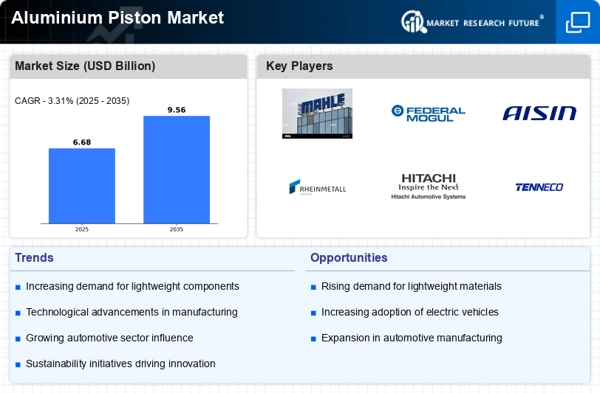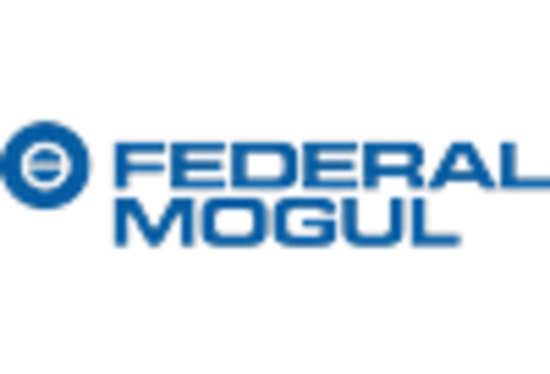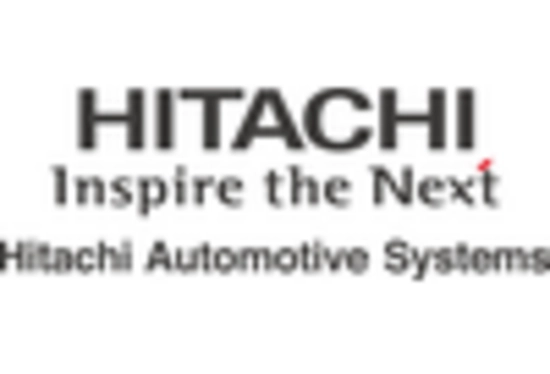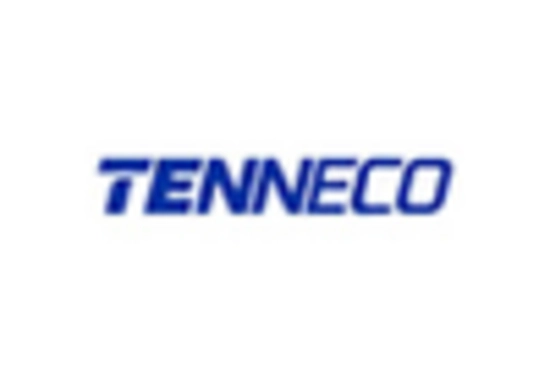The Aluminium Piston Market is currently characterized by a dynamic competitive landscape, driven by technological advancements and increasing demand for lightweight automotive components. Key players such as Mahle GmbH (Germany), Federal-Mogul Corporation (US), and Aisin Seiki Co., Ltd. (Japan) are strategically positioned to leverage innovation and operational efficiencies. Mahle GmbH (Germany) focuses on enhancing its product portfolio through research and development, particularly in lightweight materials, which aligns with the automotive industry's shift towards fuel efficiency. Federal-Mogul Corporation (US) emphasizes strategic partnerships and acquisitions to bolster its market presence, while Aisin Seiki Co., Ltd. (Japan) is investing in digital transformation initiatives to optimize manufacturing processes. Collectively, these strategies contribute to a competitive environment that is increasingly focused on technological innovation and operational excellence.
The business tactics employed by these companies reflect a concerted effort to localize manufacturing and optimize supply chains, which are crucial in a moderately fragmented market. The competitive structure is shaped by the presence of both established players and emerging companies, with key players exerting significant influence over market trends. Localized production not only reduces lead times but also enhances responsiveness to regional market demands, thereby strengthening competitive positioning.
In August 2025, Mahle GmbH (Germany) announced the launch of a new line of aluminum pistons designed specifically for electric vehicles, marking a significant shift towards sustainable automotive solutions. This strategic move underscores Mahle's commitment to innovation in response to the growing demand for electric mobility. By diversifying its product offerings, Mahle aims to capture a larger share of the evolving market, positioning itself as a leader in the transition to electric vehicle technology.
In September 2025, Federal-Mogul Corporation (US) completed the acquisition of a leading supplier of advanced piston technologies, enhancing its capabilities in high-performance applications. This acquisition is strategically important as it allows Federal-Mogul to expand its technological expertise and product range, thereby strengthening its competitive edge in the aluminium piston segment. The integration of advanced technologies is likely to improve product performance and meet the stringent requirements of modern engines.
In July 2025, Aisin Seiki Co., Ltd. (Japan) launched a new digital platform aimed at streamlining its manufacturing processes and enhancing supply chain transparency. This initiative reflects Aisin's focus on digitalization as a means to improve operational efficiency and reduce costs. By leveraging data analytics and IoT technologies, Aisin is positioning itself to respond more effectively to market fluctuations and customer demands, thereby enhancing its competitive stance in the aluminium piston market.
As of October 2025, the Aluminium Piston Market is witnessing trends that emphasize digitalization, sustainability, and the integration of artificial intelligence in manufacturing processes. Strategic alliances among key players are increasingly shaping the competitive landscape, fostering innovation and collaboration. The shift from price-based competition to a focus on technological advancement and supply chain reliability is evident, suggesting that companies that prioritize innovation and operational excellence will likely emerge as leaders in this evolving market.

















Leave a Comment